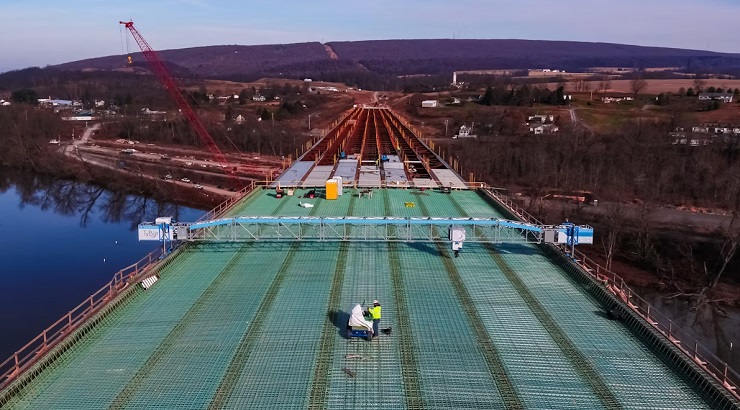Technology
Next-Gen Rebar-Tying Robot Debuts for Purchase in 2025
TyBOT 3.0 will be available for purchase in the first quarter of 2025.

Advanced Construction Robotics (ACR), a leading US-based provider of autonomous robotic machinery, has unveiled its third-generation rebar-tying robot, TyBOT.
Dubbed TyBOT 3.0, the new version will be available for purchase in the first quarter of 2025. Previously, it was offered exclusively through ACR’s RaaS (robot as a service) model.
TyBOT, which debuted almost six years ago as ACR’s first offering, is specifically engineered to transform the rebar-tying process for road and bridge construction.
The robot is designed to efficiently tie rebar at speeds exceeding 1,200 ties per hour, using a 15-pound (6.8 kg) wire spool.
Thanks to its advanced sensor technology, the machine can handle both epoxy-coated and black rebar without requiring pre-mapping, calibration, or BIM input.
The latest model, TyBOT 3.0, has a standard width of 67 feet but goes up to 117 feet with full configuration.
ACR also provides extensive training to assure users are ready to “confidently mobilize, configure, supervise, and maintain TyBOT from day one”.
Moreover, ACR’s “Service Platform Subscription” offers end-users access to a live data portal for real-time insights into their rebar installation operations and various software tools developed by ACR’s engineering team.
Other optional accessories include various travel modes on projects where there are no bridges and adding a carry function for improved material transport efficiency and safety.
RELATED: Rebar Tying Robot Works Its Magic on Highway Project
According to ACR president and chief executive Danielle Proctor, the rebar-tying robot has gained significant acceptance in the market since its introduction in 2018.
“TyBOT has been deployed in over 65 locations across the country, showing it can achieve at least 25% cost savings in installation processes and is becoming a favored tool among rodbusters,” she noted.
Proctor also mentioned a growing interest in both TyBOT and IronBOT, ACR’s second product designed for lifting, carrying, singulating, and self-placing bundles of both transverse and longitudinal rebar.








